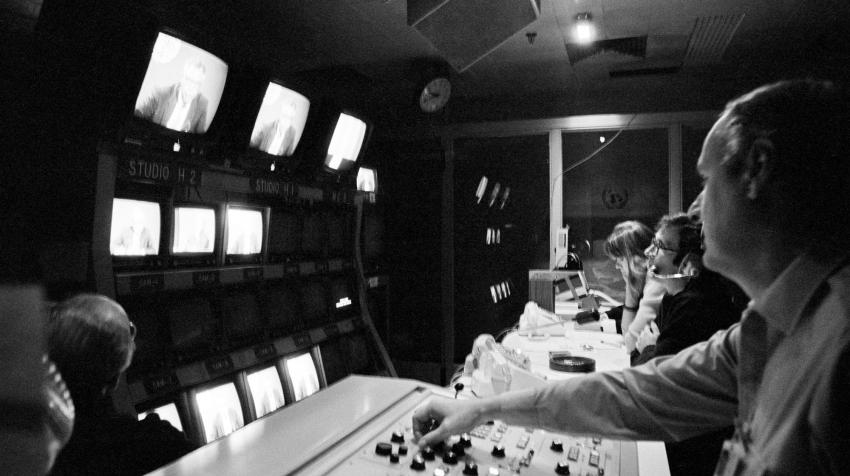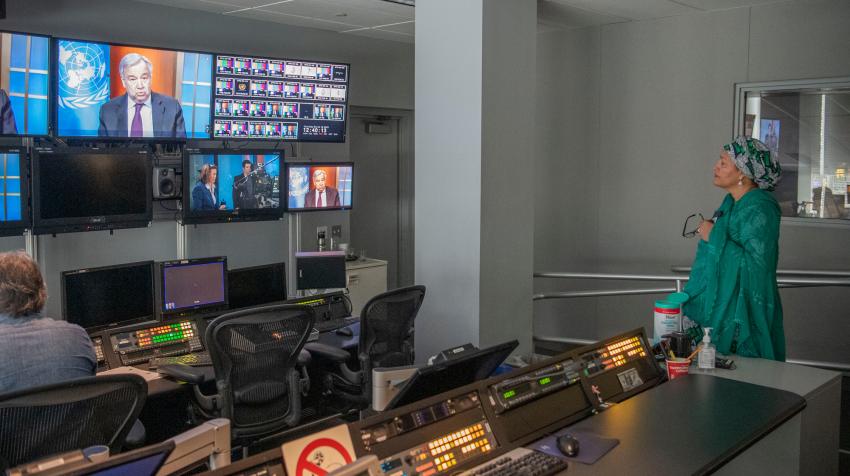20 November 2023
When the United Nations General Assembly proclaimed 21 November as World Television Day in 1996, the medium had only just begun to experience some of the challenges linked with the emergence of digital technologies. Since then, television has moved from analogue to digital broadcasting, from box sets to flatscreen TVs and computer monitors, and from national transmission to global reach through digital satellite platforms, all while offering progressively higher quality sound and picture. The entire technological environment of television has been revamped, but at high cost to the broader media industry and public funds. Today, one can hardly find a TV station that does not include an online presence; the majority of broadcasters are no longer dependent on scarce radio frequencies. Traditional television has thus survived fierce competition from Internet-based media, including video-sharing platforms and non-linear, on-demand audiovisual media services.
Moreover, TV remains the single largest source of video consumption, as the number of households with television service around the world continues to rise. In addition to entertainment, television provides ample opportunities to promote education, understanding and culture, across and within borders, and to raise public awareness about important global events that dominate the headlines.
Television helps sharpen our focus on today’s major issues, as we witness conflicts and threats to political, economic and social security unfolding, often in real time. In many countries, public service broadcasting—or public service media (PSM), as they are currently called—is responsible for providing television news content. In the same year that the United Nations decided to observe World Television Day, the Council of Europe recognized PSM as “an essential factor of pluralistic communication”. Its remit usually includes a strict observance of professional journalistic standards, a balanced and impartial approach to current affairs, a plurality of political and cultural views, and the presentation of programmes aimed at varied public audiences. It also caters to the needs of children, women and various minority groups that might otherwise be ignored by commercial media.
Audiences’ trust in public broadcasters is traditionally won through the hard work of television journalists and editors striving to meet viewer expectations. In the modern cacophony of contradicting messages, disinformation and conflicting interpretations of events, PSM is the voice of quality and investigative journalism, of fact-checking, context and reason. In this regard, PSM is capable of establishing a standard for commercial media in the dissemination of timely and reliable information to the public, especially in emergency situations.

Alas, in many so-called “transitional societies”, public service television has arrived as an unwanted and poor child, deprived of proper care and attention, existing solely as a facade of democratic reform.
In other settings, public service media may exist in name only, falling under governmental control both financially and administratively. In such cases, trust in PSM is lost, as it becomes dependent on the government and retransmits the messages of those holding political power.
The picture becomes bleaker when government-controlled PSM is complemented by other channels also being captured by the State. Media capture aims to control the public through propaganda and its primary weapon: disinformation. By obtaining a position of dominance over audiovisual media and thereby exercising pressure on TV broadcasters, and eventually curtailing their editorial freedom, the State undermines freedom of information, which is enshrined in the United Nations Universal Declaration of Human Rights, adopted seventy-five years ago, among other liberties. State control over mass information leads to its monopoly on “truth” and the elimination of media pluralism.
This is a matter of concern for the entire international community, as the systematic oppression of the human right to freedom of information within national borders leads to aggressiveness and malign propaganda against “the others” existing beyond a country’s frontiers.
The International Convention concerning the Use of Broadcasting in the Cause of Peace, a 1936 League of Nations treaty, is of particular relevance in this context, as it binds governments to “restrict expression which constituted a threat to international peace and security”. The Convention, to which a number of United Nations Member States remain parties (at least formally),1 obliges governments to prohibit and stop any broadcast transmissions within their territories that are “of such a character as to incite the population of any territory to acts incompatible with the internal order or the security of a territory”. It contains a similar mandate in regard to “incitement to war against another high contracting party”. This provision makes no distinction between the speech of the State and the speech of private individuals. Incidentally, this Convention also prohibits the broadcasting of false news. If disputes regarding the implementation of the Convention cannot be settled between the parties through diplomatic channels, they can be taken to the International Court of Justice, which was preceded by the Permanent Court of International Justice. If such parties are not members of the Court, the dispute can be submitted for review by an arbitral tribunal, constituted in conformity with the Hague Convention of 18 October 1907, for the Pacific Settlement of International Disputes, as revised by the United Nations in 1949.

Considering the Charter of the United Nations, and in accordance with the purposes and principles of the Organization, the General Assembly declared, in 1970, that it was the duty of States to refrain from propaganda for wars of aggression. Subsequently, on 1 August 1975, States participating in the Conference on Security and Co-operation in Europe (later renamed the Organization for Security and Co-operation in Europe), pledged “to refrain from propaganda for wars of aggression or for any threat or use of force… against another participating State”.
World Television Day is not so much a celebration of the technology, but rather of the noble ideals that it can be used to support. Such ideals include peace and friendly relations between nations, broader public access to information as a means of fulfilling the United Nations 2030 Agenda for Sustainable Development, and the development of a knowledge society as well as human rights and democracy. By marking this day we recognize and recall the impact of television in our lives, with the hope that its potential is harnessed for the betterment of society, and to advance peace, security and sustainable development for all.
Note
1The country that most recently acceded to the Convention was Liberia in 2005.
The UN Chronicle is not an official record. It is privileged to host senior United Nations officials as well as distinguished contributors from outside the United Nations system whose views are not necessarily those of the United Nations. Similarly, the boundaries and names shown, and the designations used, in maps or articles do not necessarily imply endorsement or acceptance by the United Nations.




